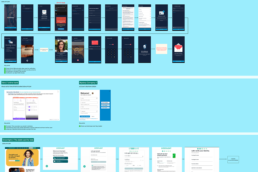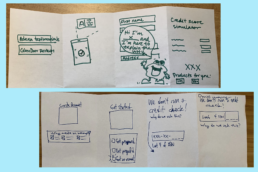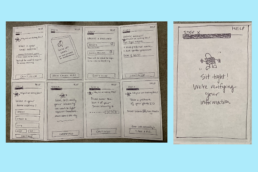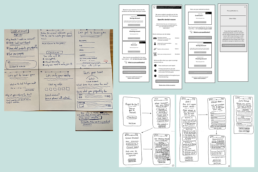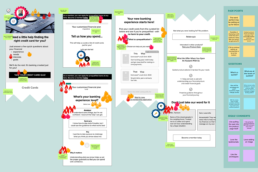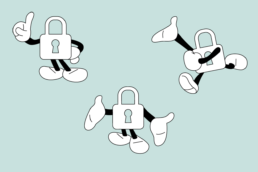Problem
In late 2020, our executive team sought to address slowed growth with new customers and identified a market opportunity with young working adults newer to personal finance. To attract and help them more easily establish a financial footing in their rapidly changing world, we would need to streamline our account opening experience across all channels. The next months gave rise to an articulated vision and validated, high-level concept that aligned our teams around a simplified and informative future for our prospective customers. However, additional work was still needed to bring this future closer to one that our development teams could deliver faster.

Approach
My design team’s objective was to build on the concept and design a minimally viable digital experience for young adults that started from the time they expressed interest in our products and services through to the submission of the application for their new account. For this project, I led my team through a set of design sprints to rapidly explore, prototype, and test key moments of a usable and valuable first version of this future experience.
In preparation for the design sprints, I coordinated with the team to align on and prioritize our design challenges. Insights from our concept prototype informed our decisions to focus on our digital channel and explore how we might learn about our prospects’ digital needs and expectations, handle sensitive information, contextualize relevant information, recommend the right products that met their financial needs.
For each challenge, we identified design constraints and conditions that would need to be true for our idea to be realistic and doable. Because we would be handling personable identifiable information, the experience had to be at least as secure as the experience we we would be replacing.
We also saw an opportunity to explore how we might increase our competitive advantage by looking outside our walls. We brought in analogous inspirations and carved out dedicated time for rounds of Crazy 8’s to encourage wild and brilliant ideas that could create unique and sustainable differentiation.
During the design sprints, I facilitated activities that helped the team empathize, ideate, and turn their abstract ideas into tangible, competing sketches.
Low-fidelity sketches allowed our technical SME’s to assess the technical feasibility of our ideas. As we moved towards a low-effort experience, where were we sacrificing security? The technical feedback informed which prototype to test and helped develop our test guides.
Moderated user tests helped us learn what young adults expected and appreciated as well as what they could care less about. We used these insights to iterate on the language and communication, visual presentation, and overall steps of the customer journey.
And in six weeks, our team had a validated MVP solution that was usable and valuable and a tangible design that our developers could deliver faster.
Outcome
The validation of key moments in the experience increased organizational confidence and the MVP was launched at the end of 2022. The new account has been celebrated internally for being more secure, faster, and easier for new customers to complete online. And, for the first time, it is providing our customers with instant access to their new account online or through the mobile app. Since being launched, the new experience has contributed to reversing the growth trend and new customer growth is back to where we should be given our size and trending upward in 2023.
What user testers had to say about our experience prototype
This is really great. I bet the actual product is going to be amazing when it's finalized. It's a pretty good way to start a relationship with a credit union.
The experience was very easy and fast. The language used was also in layman's terms. Everything made a lot of sense.
Convenient. I knew where I was in the process and exactly what to expect at every step.
It was simple, easy, and didn't clutter the screen so much that you had to search for just the basic details. It was the process I would expect to go through.
